Tree hydrangea (lat. Hydrangea arborescens) is actively cultivated as a beautifully flowering ornamental garden plant. This is the most frost-resistant and widespread species of the hydrangea genus.
Review of tree hydrangea varieties from Natalia Samoilenko
Numerous flowers forming luxurious inflorescences can be of two types.As a rule, sterile ones are located along the edge of the inflorescence-scutellum, the center is filled with reproductive flowers. The color of the petals changes as the petals open. In buds they are green in various shades. When fully expanded, the main color appears.
| Content:
|
The inflorescences of tree hydrangea cannot compete with the chic caps of paniculata hydrangea, and do not have such a diverse palette of shades of large-leaved varieties. The species is dominated by white and pink shades. But these disadvantages are compensated by the advantages of tree hydrangea:
- fast growth;
- the ability to grow in one place for 30-40 years;
- ability to grow on neutral and slightly alkaline soils;
- high frost resistance allows the crop to overwinter without shelter and grow in open ground in Siberia, the Urals or central Russia - frozen shoots are easily restored;
- long flowering, from the first half of June to mid-autumn;
Some varieties have no less decorative foliage in autumn; yellow and red shades are added to the green colors. The leaves do not lose their bright colors even after drying.
Tree hydrangea is used in the organization of green hedges or borders. An adult plant will decorate a flowerbed or plant arrangement, and will also play a major role in a single planting.
Winter-hardy hydrangea varieties for the Moscow region
In the Moscow region you can grow any variety of Hydrangea arborescens. Even if it freezes in severe winters, the crop quickly grows shoots in the spring and will bloom in the same summer.Below are the names of the best varieties with descriptions and photos that do not require shelter for the winter in the Central Russian region.
Annabelle
|
An ancient variety with large creamy white loose inflorescences consisting of many sterile flowers. At the end of the season, the petals take on a light green hue. |
The shoots are thin, bend under the weight of the inflorescences. Annabelle grows in partial shade and full sun. Recovers quickly after pruning. Prefers slightly acidic soil.
- Shrub 1.5 m high, up to 3 m wide.
- The scutes are spherical, 28 cm in diameter.
- Flowering: July - October.
- Frost resistance: -35°C, zone 4. (Middle zone, Moscow region.)
Many gardeners are attracted by the variety’s ability to maintain decorative leaves until frost.
Hayes Starburst
|
A unique variety whose sterile flowers are double and resemble stars. The petals are pale green in buds, white when open, and greenish again after wilting. When grown in partial shade, the inflorescences become smaller. |
- A compact plant with red-brown stems, 1 - 1.3 m high, up to 1.4 m in diameter. The stems are thin, bend under the weight of the inflorescences.
- The scutes are hemispherical, 24 cm in diameter, the leaves are velvety, light green.
- Flowering: June - September.
- Winter hardiness: -38 °C, zone 3. (Arkhangelsk region, Ural, Far East)
It grows slowly, the best qualities appear in the third year after planting.
Bounty
|
The flowers are pale green before blooming, later white. The shoots do not die after rain. The variety is undemanding to soil composition, but requires abundant frequent watering. More sun tolerant than other hydrangeas. |
- Shrub up to 1-1.4 m high, up to 1.7 m in diameter.
- Inflorescences are hemispherical in shape, up to 22 cm in diameter.The leaves are dark green in summer, yellow, green and brown in autumn.
- Flowering: June - October.
- Frost resistance: -39°C, zone 3.
Grandiflora
|
A fast-growing variety that develops best in sunny areas. The light green shade of the petals in the bud changes to white-cream when blooming. Loves moist soils. |
- Shrub 2 m high, rounded crown.
- The inflorescences are medium-sized, up to 15-20 cm in diameter, the upper side of the leaf is green, the lower side is bluish.
- Flowering: July - September.
- Frost resistance: -34°C, zone 4. (Central part of Russia, Moscow region)
Lime Rickey
|
The lime color of the petals at the beginning of flowering gives the variety its name. As it blooms, the lime shade becomes lighter. |
To increase the number of inflorescences and their size, the stems are cut short in the spring. Lime Rickey grows well in a semi-shady area with well-drained, moist soil. Great for cutting and dry bouquets.
- Shrub 1.1-1.4 m high, rounded crown shape. Strong shoots do not bend from bad weather and under the weight of flowers.
- The inflorescences are hemispherical, 18-26 cm in diameter.
- Flowering: July - September.
- Winter hardiness: -35°C, zone 4. (Middle zone, Moscow region)
Great for cutting and dry bouquets. Attracts gardeners with abundant flowering.
The best white varieties
White Dome
|
The White Dome variety has large, flat inflorescences framed by white sterile flowers. In the middle are pale cream or pale green reproductive flowers. |
The stems do not need support. The variety is demanding on soil fertility and moisture; it prefers acidic loams.
- Height 0.8-1.3 m.
- The inflorescences are hemispherical, up to 16 cm in diameter. The leaves are round, slightly corrugated, light green, velvety.
- Flowering: June - September.
- Frost resistance: -29°C, zone 4. Shelter for the winter is advisable.
The color and shape of the inflorescences are not the only advantage of White Dome. The variety has a subtle aroma that can only be felt at close range.
Emerald Lace
|
The inflorescences are white, consisting mainly of reproductive small flowers, few sterile. By autumn the color changes to creamy green. |
Prefers moist, breathable soils. Prefers open sunny areas or light shade.
- Height 1.3-1.6 m.
- The inflorescences are medium-sized, up to 14 cm in diameter, the leaves are dark green, dense, carved along the edges.
- Flowering: July - September.
- Frost resistance: -29°C, zone 4.
For winter, light shelter is desirable. In case of freezing it quickly recovers.
White Ball or White Ball
|
One of the best varieties of white hydrangea. The snow-white inflorescences of the White Ball variety are formed both on last year’s shoots and on the current year’s branches. |
Light green shoots grow unevenly, so the crown has an uneven rounded shape. Prefers acidic, moist soil.
- The bush is large, 1.5 m high, 2 m wide.
- The inflorescences are dense, spherical, up to 25 cm in diameter, the leaves are dark green in summer and yellow in autumn with pronounced veins and fine teeth.
- Flowering: June - October.
- Frost resistance: -35°C, zone 4. (Central part of Russia, Moscow region)
Incredibl or Strong Annabelle (Incredibol or Strong Annabelle)
|
The basis for the creation of the Incredibol variety was the Annabelle variety. The main difference is that the culture forms strong shoots that hold large inflorescences well. |
The number of scutes is 4 times greater than that of the Annabelle variety. Prefers to grow in sunny areas.
- Height 1.1 - 1.6 m.
- The inflorescences are spherical, 20-22 cm in diameter, the leaves are light green.
- Flowering: June - October.
- Frost resistance: -34°C, zone 4.
The color changes during the flowering process. At first the flowers are lemon, then white, and at the end of flowering they are green.
Sterilis
|
The buds are white with a green coating after blooming and become snow-white. Inflorescences are collected from large sterile flowers. |
Stems need support during flowering. The variety develops better in sunny places.
- Bush 0.9-1.3 m high, 1.5 m in diameter.
- The inflorescences are dense, hemispherical, up to 18 cm in diameter, the leaves are elongated, light green.
- Flowering: June - September.
- Frost resistance: -29°C, zone 4.
Sterilis requires mulching for the winter for both young and adult plants.
Pink varieties
Ruby Annabelle or Invincibelle Ruby
|
At the end of spring, numerous scutes appear at the ends of the shoots of Ruby Annabelle, densely strewn with ruby buds. |
When blooming, the flowers take on a red-pink hue. Only towards the end of the season do the bright colors give way to silver-pink. The underside of the petals remains ruby until autumn. Bronze medalist at Plantarium 2016.
- Bush with elastic shoots 0.9-1.3 m high.
- The inflorescences are hemispherical, 10-15 cm in diameter.
- Flowering: June - October.
- Frost resistance: -34°C, zone 4.
The variety is suitable for container growing. It will fit organically into an alpine hill or a flowerbed with perennials.
Magical Pinkerbell
|
One of the best varieties with purple-pink flowers. Planted in sunny or partial shade. Well-drained and moist soil is suitable. |
- The shrub is round in shape, 1.3 m high and wide.
- The inflorescences are hemispherical, 10-16 cm in diameter. The stems are strong and do not bend under the weight of the inflorescences.
- Flowering: June - August.
- Frost resistance: -25°C, zone 5.
The shrub is widely used in urban and country landscaping.
Pink Pincushion or Pink Pincushion
|
Looks great both in single compositions and in group plantings. |
The color of the petals during flowering changes from pink to white and dark pink. The inflorescences consist mainly of small reproductive flowers, with rare inclusions of large sterile ones.
- Bush 1-1.2 m high, 1.5 m wide.
- The inflorescences are flat, up to 15 cm in diameter. The leaves are green in summer, becoming greenish-yellow in autumn.
- Flowering: June - August.
- Frost resistance: -29°C, zone 4. In the Moscow region, it requires shelter for the winter.
Grows well in shaded areas. Pink Pincushion grows slowly in full sun.
Candybelle Bubblegum
|
The inflorescence consists of many sterile pale pink flowers that turn bright pink as they bloom. |
The shoots are strong and do not fall apart during flowering. Prefers partial shade, but can also grow in full sun.
- The bush is low-growing, 0.8 m high, 0.9 m wide.
- The inflorescences are hemispherical, 10-15 cm in diameter, the leaves are green with a bronze tint.
- Flowering: July - September.
- Frost resistance: -29°C, zone 4. In the Moscow region, freezing is possible in winter, but Candybelle Bubblegum quickly recovers.
This variety requires well-drained, humus-rich soils, without prolonged stagnation of moisture.
Pink Percussion
|
The petals of the buds are pink, but when fully opened they become pale pink.In autumn, the inflorescences take on an incredible lilac-pink tone. |
The inflorescence corymbs consist of small reproductive flowers interspersed with single large sterile flowers. Pink Percussion has a pleasant honey aroma.
- The bush is fast growing, 1.5 m high, 2 m wide.
- The inflorescences are hemispherical, up to 10-15 cm in diameter. The leaves are emerald.
- Flowering: June - August.
- Frost resistance: -35°C, zone 4.
Prefers moist, drained, fertile, loamy soils with slightly acidic and acidic reactions.
New, best varieties of hydrangea
Every year new varieties of tree hydrangea appear. BellaRagazza is a series of new best dwarf varieties that differ in the shades of the inflorescences. Gardeners are attracted by such characteristics of the new series as: annual long and abundant flowering on the current year's shoots, high frost resistance, strong stems that hold the flowers in an upright position all season.
The dwarf sizes of the varieties in this series allow them to be used for decoration in gardens and parks with different landscapes. The best hydrangea varieties in this series: Limetta, Blanchetta, Mauvette.
Limetta (BellaRagazza Limetta)
|
The Limetta variety changes the color of the inflorescences from light green to white with a green coating, and back to light green. Gold medal at Plantarium 2018. |
- Dwarf bush, 0.75 m high.
- The inflorescences are spherical, up to 10-15 cm in diameter.
- Flowering: June - October.
- Frost resistance: -40°C, zone 3. (Northern region, Far East)
Blanchetta (BellaRagazza Blanchetta)
|
Blanchetta starts out with white flowers that turn light pink and green over time. |
- Dwarf bush, 0.5 m high.
- The inflorescences are spherical, up to 15 cm in diameter.
- Flowering: June - October.
- Frost resistance: -40°C, zone 3.
Movette or Invincibelle Mini Mauvette (Mauvette or BellaRagazza Invincibelle Mini Mauvette)
|
Mauvette has unique, deep pink inflorescences. |
- Dwarf bush, 0.75 m high.
- Inflorescences up to 15 cm in diameter.
- Flowering: June - October.
- Frost resistance: -40°C, zone 3. (Arkhangelsk region, Ural, Far East)
Invincibelle
|
The variety is also called Pink Annabelle or Invincibelle Spirit. All of them belong to a young variety of tree hydrangea with pink shields. |
An improved version of the Annabelle variety. At the beginning of the season, the upper side of the petals is pale pink, the lower side is dark pink. Over time, the color evens out and the inflorescences become bright pink.
- Bush 1.5 m high, strong stems.
- The inflorescences are huge, spherical, up to 30 cm in diameter.
- Prefers moist soil with a slightly acidic reaction.
- Location: sunny (in cold regions) and semi-shaded (in warm climates).
- Flowering: June - October.
- Frost resistance: -40°C, zone 3.
The size and abundance of inflorescence shields directly depend on pruning. The more radical the shortening of the shoots, the larger the inflorescences, but the number of inflorescences decreases, and vice versa.
Bella Anna
|
The flowers remain bright pink throughout the flowering period. The pointed petals resemble stars. |
The shoots bend to the ground under the weight of large inflorescences. With high air humidity, there is a high probability of gray rot.
- The bush is compact, up to 1.2 m high.
- The inflorescences are hemispherical, loose, up to 30 cm in diameter. The summer green color of the leaves changes to yellow in autumn.
- Flowering: June - October.
- Winter hardiness: -38°C, zone 3.
To increase the size and number of scutes of Bella Anna hydrangea, the stems should be shortened to 10 cm in early spring.
Candybelle Lollypop
|
The inflorescences of the new variety are corymbs, with densely arranged sterile flowers ranging from soft pink to crimson. |
To increase the size of the inflorescences, spring pruning is required. Growth rate: average. It differs from other varieties in its more abundant flowering.
- The bush is compact, 1.2 m high, with strong shoots.
- Inflorescences of irregular shape, up to 15 cm in diameter, dark green foliage.
- Flowering: June - September.
- Frost resistance: -35°C, zone 4.
Candybelle Lollypop can be grown in pots.
Candybelle Marshmallow
|
New dwarf variety. The flowers are pink, collected in hemispherical tight inflorescences. The stems are strong. A distinctive feature is the abundant flowering. |
- Height 0.8 m, width 0.9 m.
- Inflorescences up to 16 cm in diameter.
- Flowering: June - September.
- Frost resistance: -35°C, zone 4.
Bronze medalist of the Plantarium -2019 exhibition.
Golden Annabelle
|
Variegated form of the Annabelle variety. The edges of green leaves have a lighter shade, often yellow-green. Flower color varies from creamy white to light green. |
It blooms very profusely on the shoots of the current year. Prefers fertile, moist, breathable soil.
- Height 1.2-1.5 m, width 0.9-1.5 m.
- The inflorescences are openwork balls, up to 28 cm in diameter.
- Flowering: July - August.
- Frost resistance: -35°C, zone 4.
Incrediball Blush or Sweet Annabelle
|
In the new variety, the breeders managed to combine the frost resistance and decorative qualities of the Annabelle hydrangea with the strong shoots and huge size of the shields of the Incrediball series. |
Bronze medal at the Plantarium 2016 exhibition.The plant comes into force in the third year after planting.
- Height up to 1.5 m.
- The inflorescences are hemispherical, up to 20 cm in diameter. The dark green leaves do not change color throughout the season.
- Flowering: June - October.
- Winter hardiness: -29°C, zone 4.
When blooming, the buds are light pink with a silvery tint. Gradually the petals darken. Used for cutting and as a dried flower.
Hills of Snow
|
During the flowering period, the bush is covered with numerous greenish-white hemispherical inflorescences. At the peak of flowering, the petals become dazzling white, and closer to autumn they turn pink. |
Hills of Snow does not like drought, but is more tolerant of sun than other varieties. Prefers to grow in moist soils with good drainage.
- Bush up to 1.5 m high and wide, with elastic shoots.
- The inflorescences are dome-shaped, up to 15 cm in diameter.
- Flowering: July - September.
- Frost resistance: -39°C, zone 3.
The fast-growing variety adds 20 cm per year, which creates the need for regular crown formation.
Planting and care
The timing of planting depends on the region in which the tree hydrangea will be grown. In cold climates, planting is carried out with the spring thawing of the soil, before the start of sap flow. In other cases - in early May or September.
|
The place should be sunny until noon, the rest of the time partial shade is preferable. The area with the plant must be protected from the wind. The soil is nutritious, well-drained, moist, but without stagnant moisture. |
Planting hydrangea seedlings begins with preparing a hole measuring 40x40 cm. The bottom of the hole is filled with drainage. Then a mound of fertile soil is poured. The seedling is placed on it so that the root collar is at ground level. The roots are straightened and covered with soil.The earth is compacted and the bush is watered abundantly.
Proper care of tree hydrangea will prolong flowering, increase the size of the scutes and improve the decorative appearance of the shrub.
Watering is carried out 1-2 times a week. A moisture-loving plant should not grow near other bushes and trees that take up liquid. The optimal distance is 2 meters. After watering, weeds must be removed and the soil around the trunk loosened. Mulching with peat or humus will help reduce the amount of weeding and watering.
|
Fertilizing is an integral part of plant care. Tree hydrangeas need feeding once every 2 weeks during the growing season and flowering period. For this purpose, mineral and organic compositions for flowering shrubs are used. |
Once a month, hydrangea needs to be fed with a pale pink solution of potassium permanganate. This will increase the number of inflorescences, strengthen the wood, and protect against fungal diseases. In addition, to ensure that the acidity of the soil is not disturbed, iron sulfate is added.
Tree hydrangea is propagated vegetatively: by cuttings, layering or dividing the bush.
Pruning will not be necessary for the first 4 years, but then should be done every spring and autumn. In the spring, you need to cut off frostbitten and old shoots, giving the crop a beautiful shape, and in the fall, remove dried inflorescences.
Sheltering adult plants for the winter is not necessary, but for young plants it is necessary. For example, using spruce branches or leaf litter.
Do not miss:
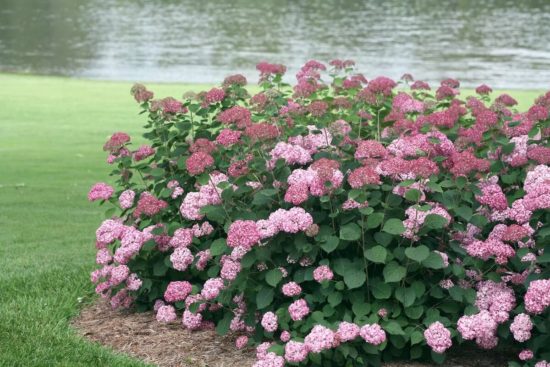
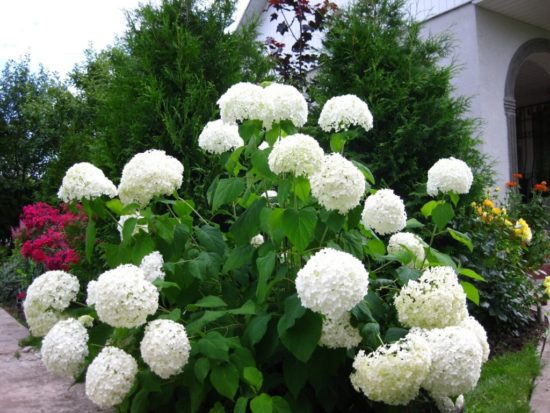
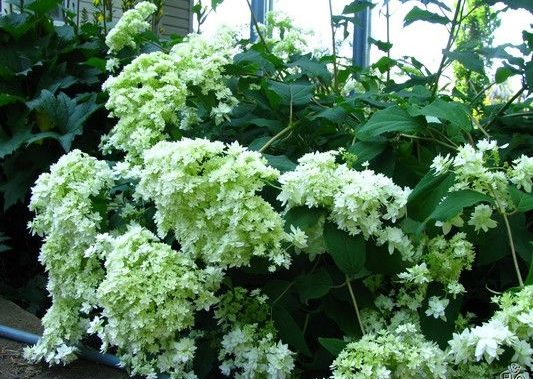

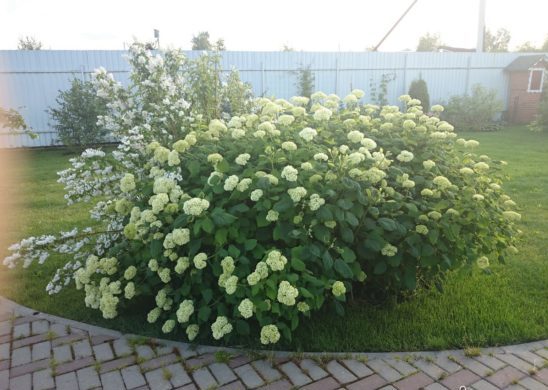
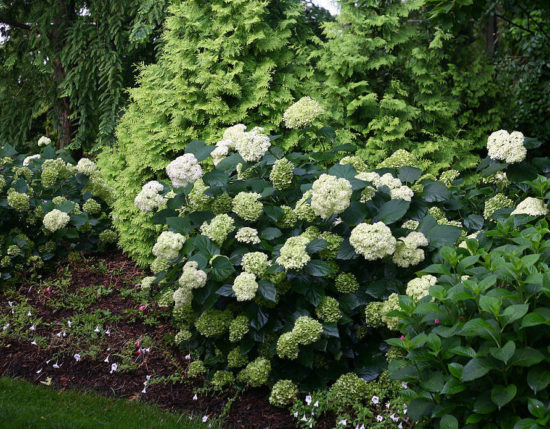
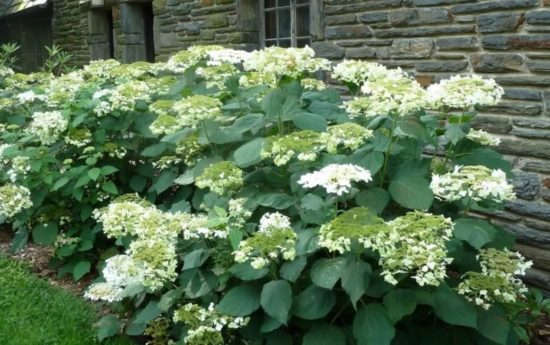
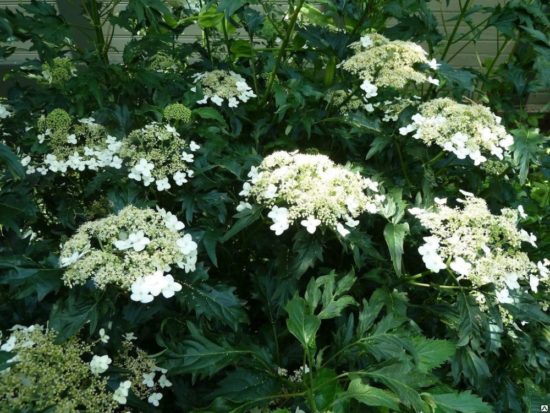
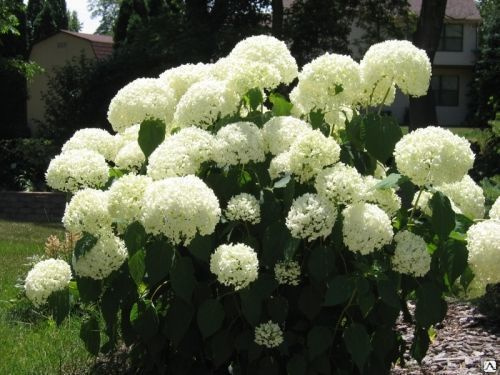
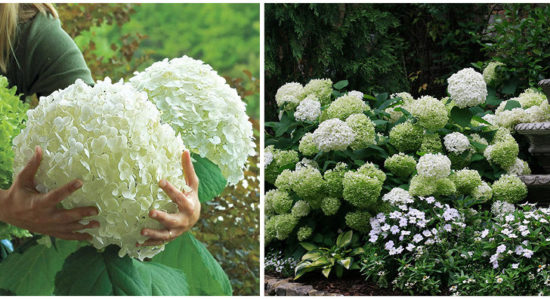
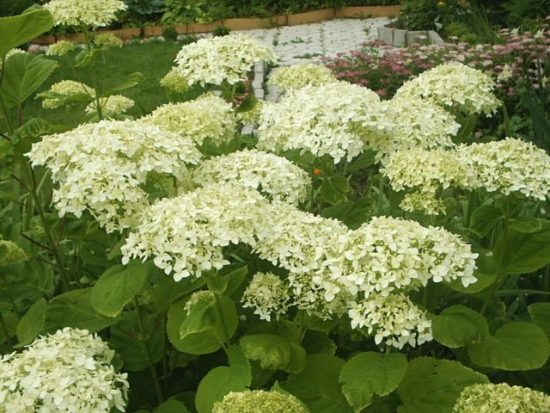
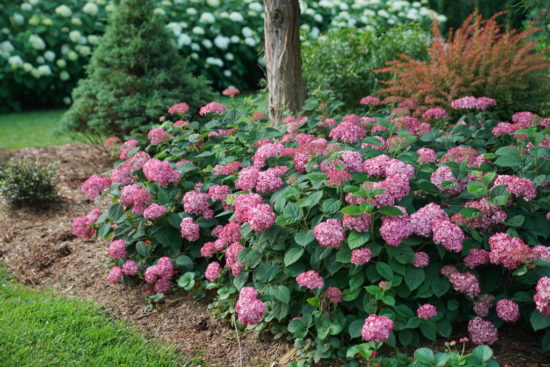
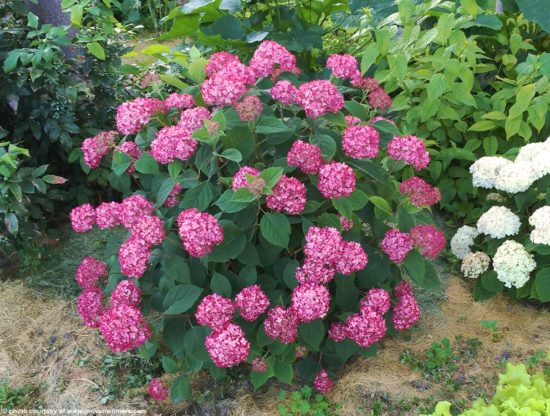
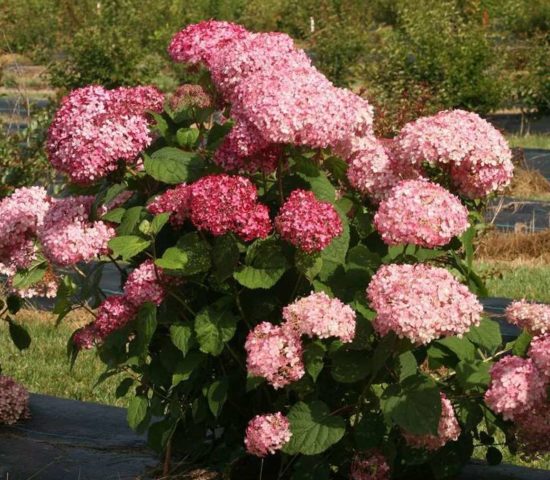
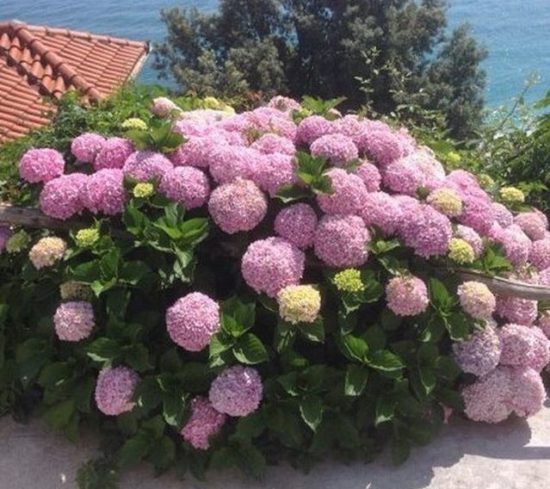
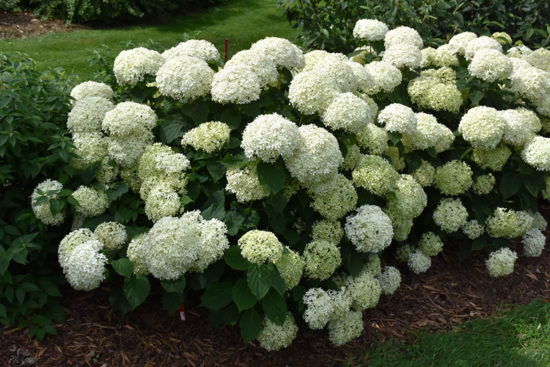

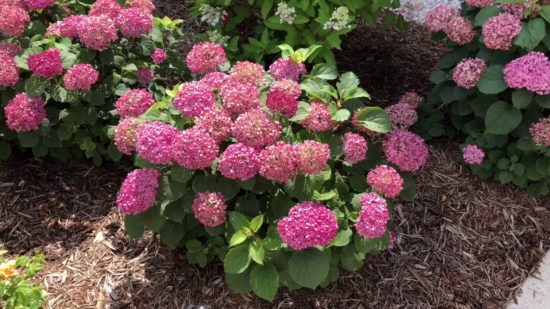
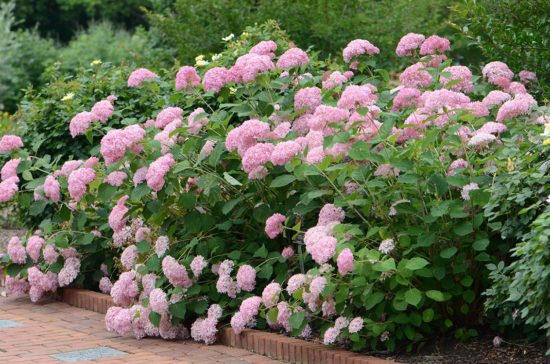
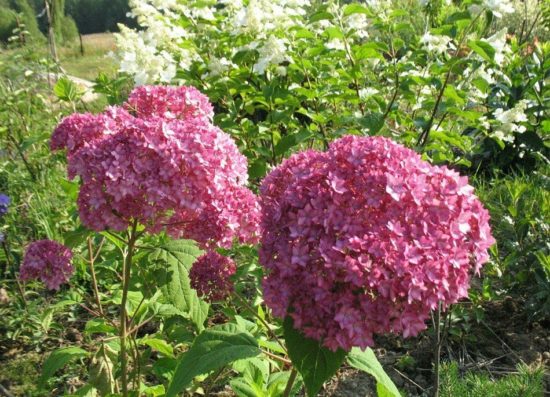
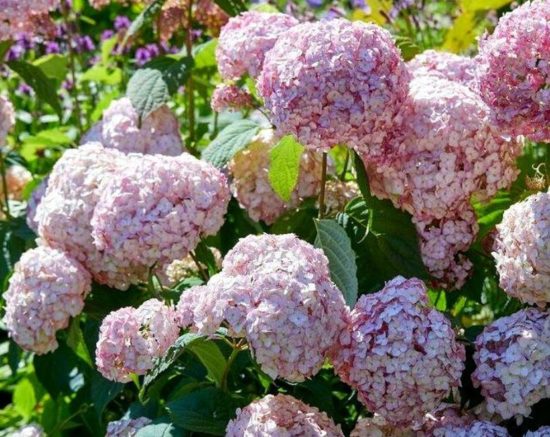
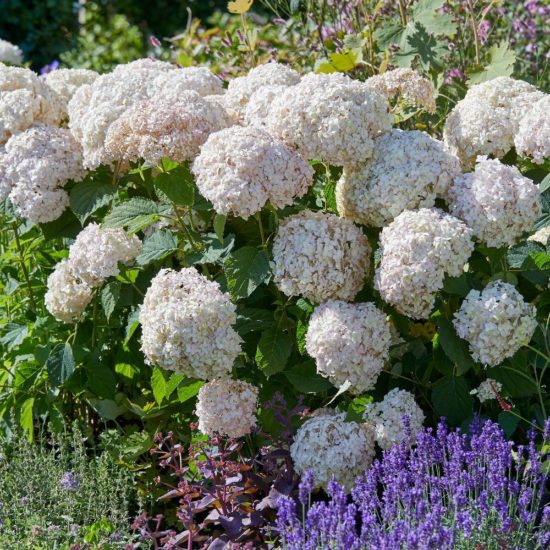
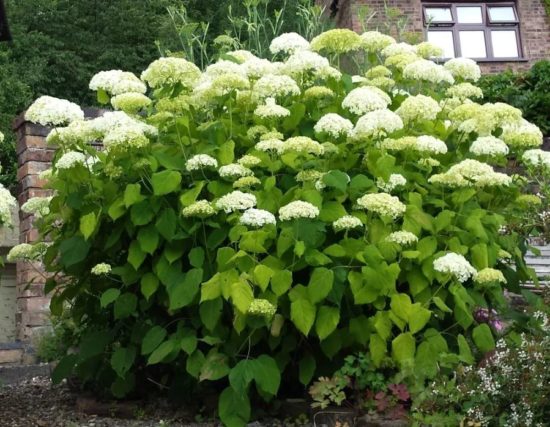
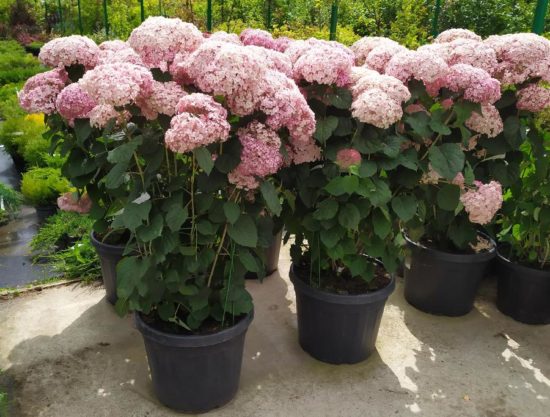
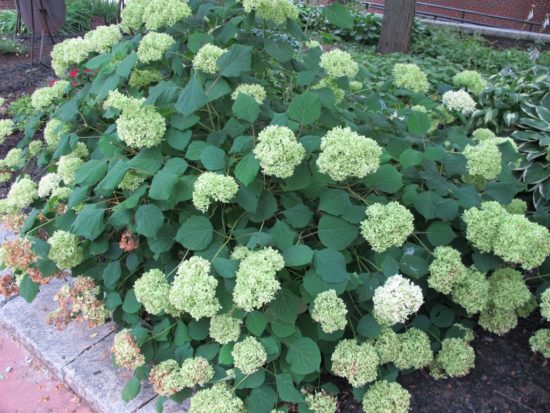
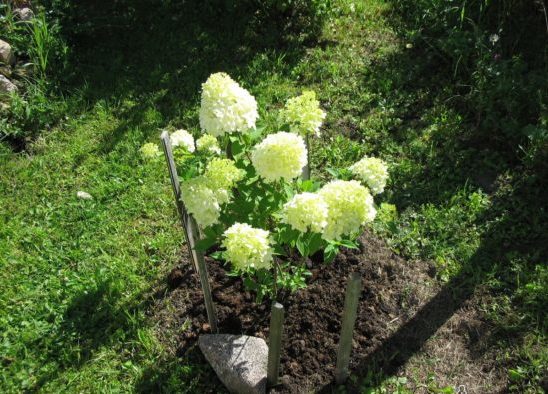
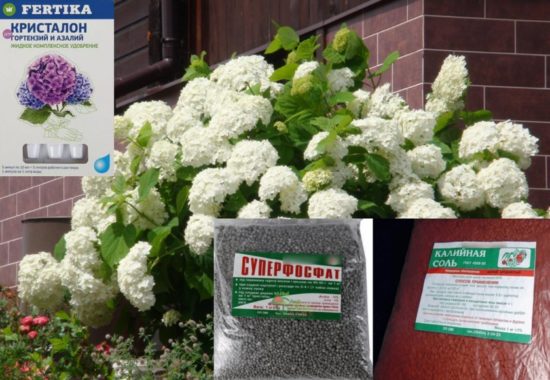

 (8 ratings, average: 4,25 out of 5)
(8 ratings, average: 4,25 out of 5) CUCUMBERS NEVER GET SICK, I'VE BEEN USING ONLY THIS FOR 40 YEARS! I SHARE A SECRET WITH YOU, CUCUMBERS ARE LIKE THE PICTURE!
CUCUMBERS NEVER GET SICK, I'VE BEEN USING ONLY THIS FOR 40 YEARS! I SHARE A SECRET WITH YOU, CUCUMBERS ARE LIKE THE PICTURE! You can dig a bucket of potatoes from each bush. Do you think these are fairy tales? Watch the video
You can dig a bucket of potatoes from each bush. Do you think these are fairy tales? Watch the video
 How our fellow gardeners work in Korea. There is a lot to learn and just fun to watch.
How our fellow gardeners work in Korea. There is a lot to learn and just fun to watch. Eye trainer. The author claims that with daily viewing, vision is restored. They don't charge money for views.
Eye trainer. The author claims that with daily viewing, vision is restored. They don't charge money for views. A 3-ingredient cake recipe in 30 minutes is better than Napoleon. Simple and very tasty.
A 3-ingredient cake recipe in 30 minutes is better than Napoleon. Simple and very tasty. Therapeutic exercises for cervical osteochondrosis. A complete set of exercises.
Therapeutic exercises for cervical osteochondrosis. A complete set of exercises. Which indoor plants match your zodiac sign?
Which indoor plants match your zodiac sign? What about them? Excursion to German dachas.
What about them? Excursion to German dachas.